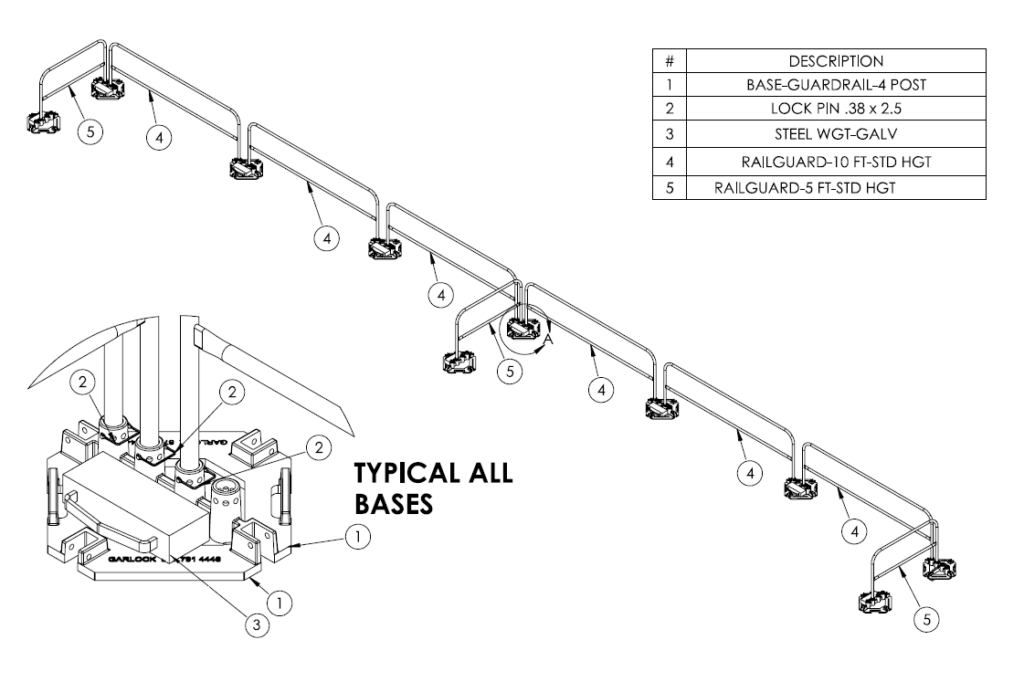An important part of workplace safety when working at heights is the proper selection and installation of fall protection systems. Inclement weather and high winds can compromise fall protection systems leaving workers exposed to unexpected hazards.
It is important to understand the weather conditions your chosen fall protection system will be subjected to in terms of wind load and geographic area. General wind condition data by geographic location can be found in the International Building Code (IBC) and ASCE Standard 7-10.
Here at Garlock Safety Systems, our RailGuard 200 Safety Guardrail can handle up to 150MPH winds when installed properly. After an in-depth computational analysis of the RailGuard 200 system and its components, we have developed 3 RailGuard classes and installation configurations. These configurations are for flat (Max .5”/12”) roofs only.
CLASS 1 covers geographic locations where winds do not historically exceed 100 MPH. These locations should utilize our standard configuration made up of rails no greater than 10 feet long and bases on either end of each rail. Each run shall begin and end with an outrigger no less than 5 feet long with a base installed on the far end of the outrigger.
CLASS 2 covers geographic locations where winds do not historically exceed 130 MPH. As with Class 1, these locations should utilize a configuration made up rails no greater than 10 feet long and bases on either end of each rail. A 5-foot outrigger and base must be installed at 90 degrees from the run at the junction of every third rail. It is important to note that one Garlock-supplied ballast weight must be installed on ALL bases. Each run shall begin and end with an outrigger no less than 5 feet long with a ballast weighted base installed on the far end of the outrigger.
CLASS 3 covers geographic locations where winds do not historically exceed 150 MPH and is the highest rating for a ballasted system provided by Garlock Safety Systems. As with Class 1 and 2, these locations should utilize a configuration made up rails no greater than 10 feet long and bases on either end of each rail. A 5-foot outrigger and base must be installed at 90 degrees from the run at the junction of every other rail. It is important to note that two Garlock-supplied ballast weights must be installed on ALL bases. Each run shall begin and end with an outrigger no less than 5 feet long with a ballast weighted base installed on the far end of the outrigger.
NOTE: A thorough evaluation of the roof and building structure must be carried out by a structural engineer to ensure the roof can support the weight of the Class 3 system.
In addition to proper installation, seek guidance from local experts to identify any anomalous, localized wind conditions. Such anomalies can include turbulence and updrafts caused by local topography, size, and shape of nearby buildings and the proximity of these buildings to your installation.
With proper installation, passive fall protection systems such as our RailGuard 200 system can handle a variety of wind loads. Make sure you are selecting the correct type of system and installation configuration to meet your needs and protect the safety of your workers.



